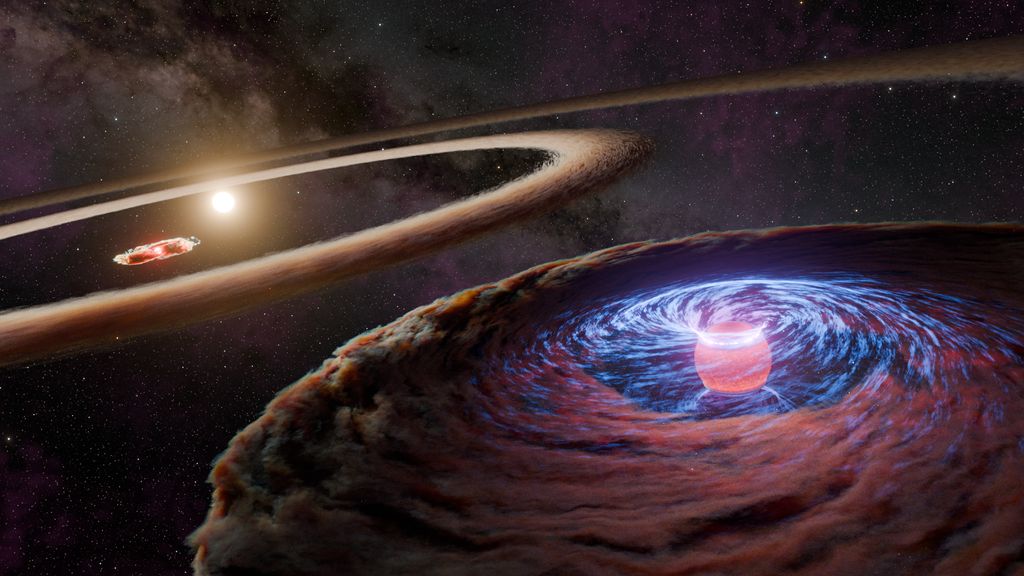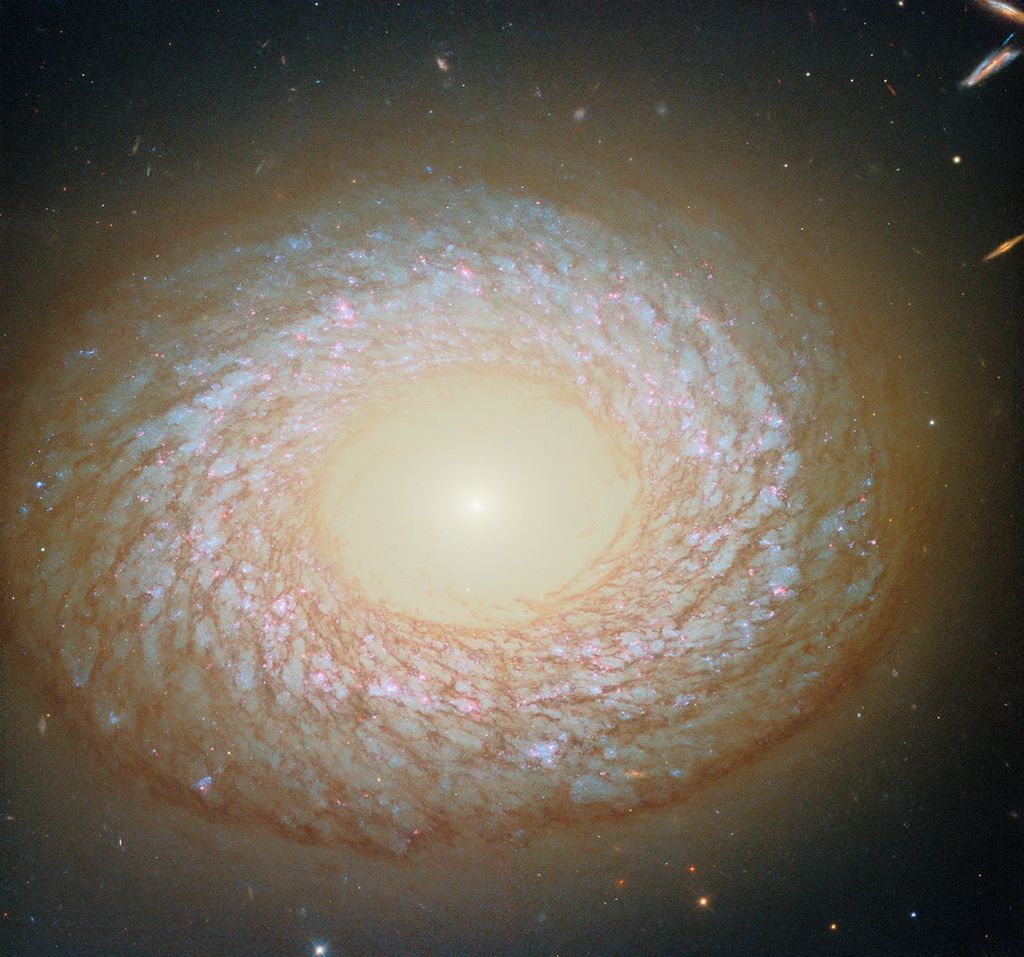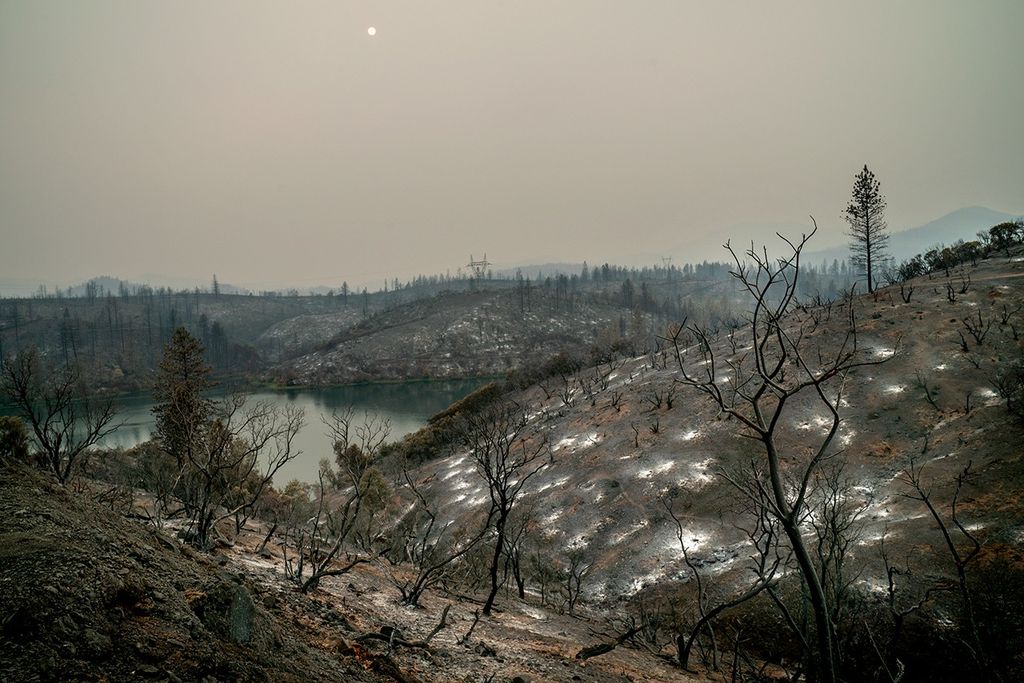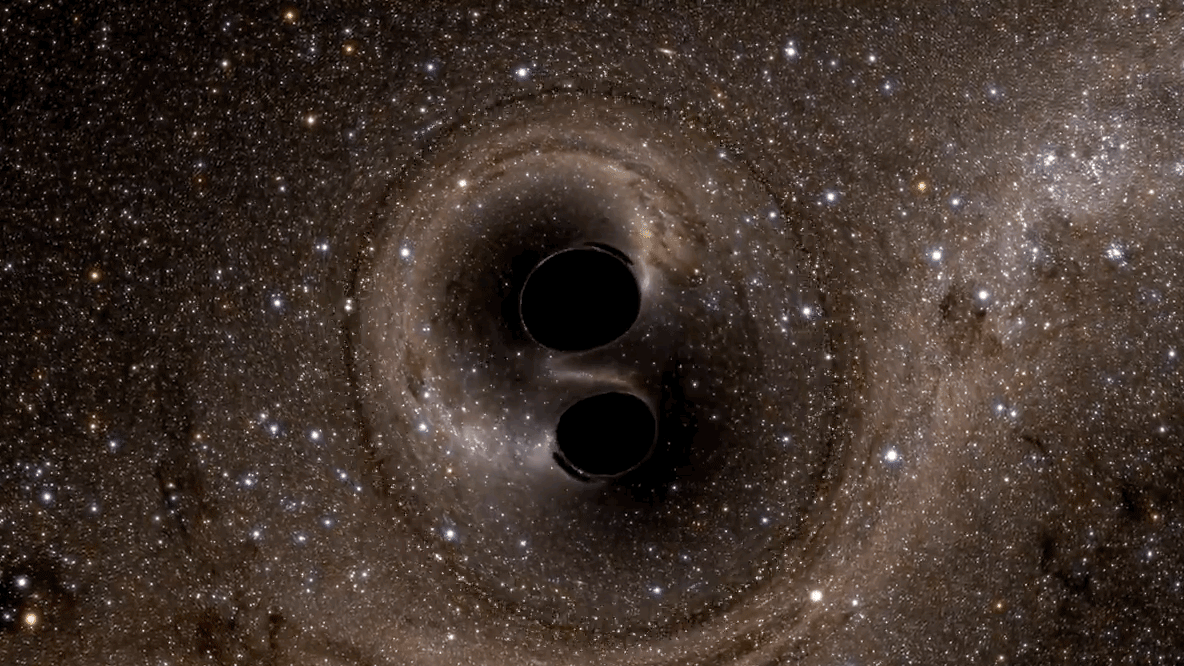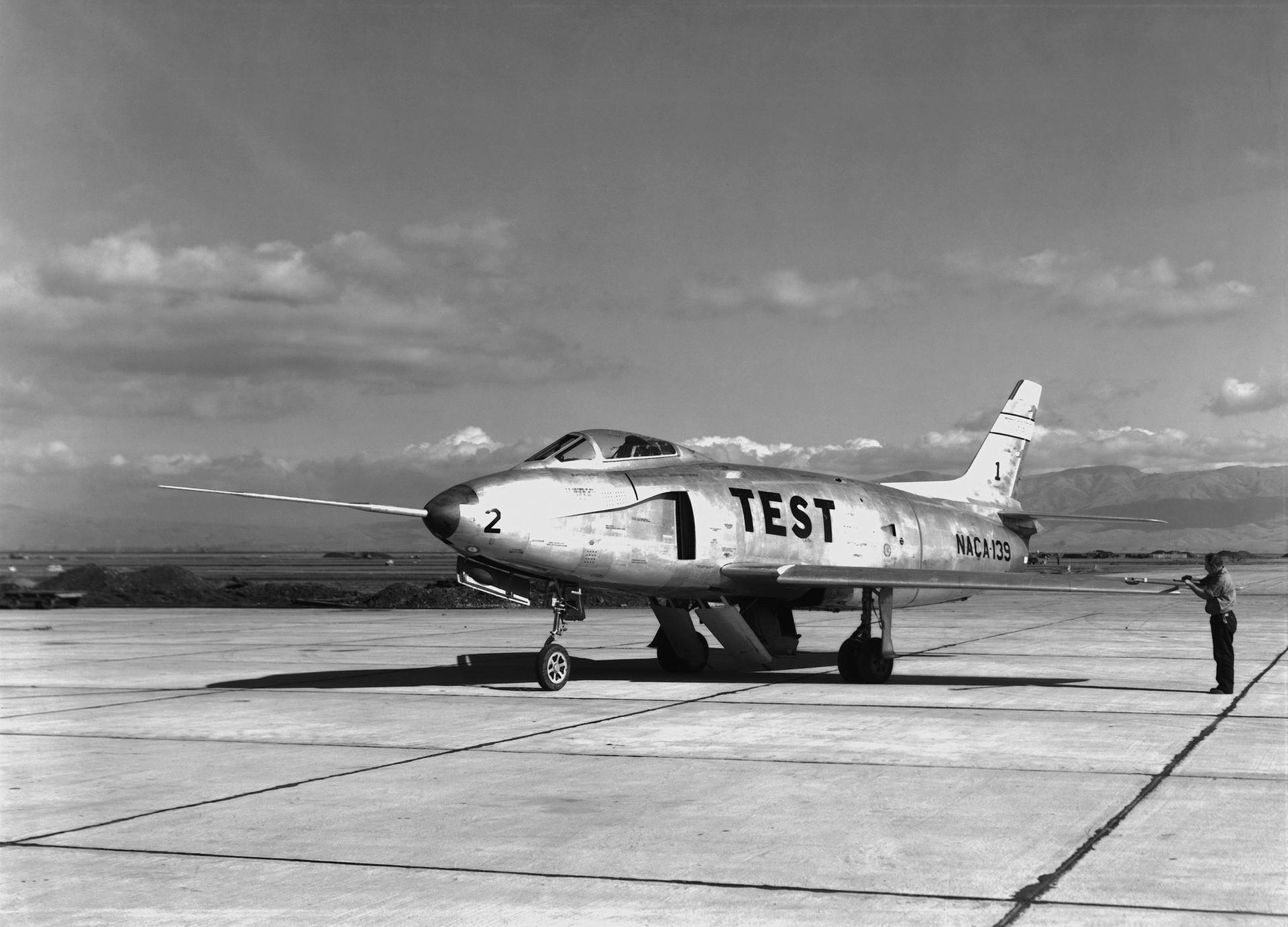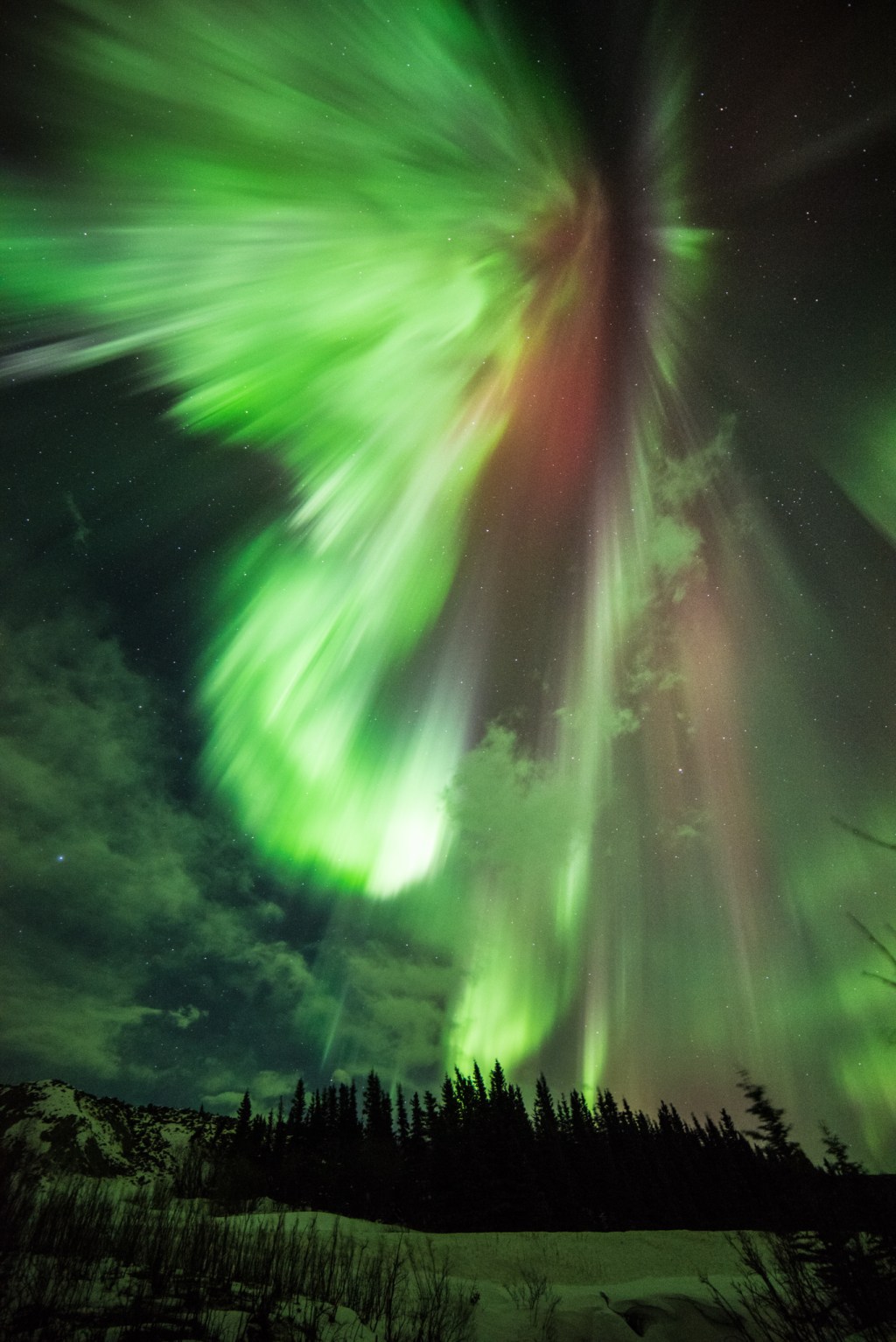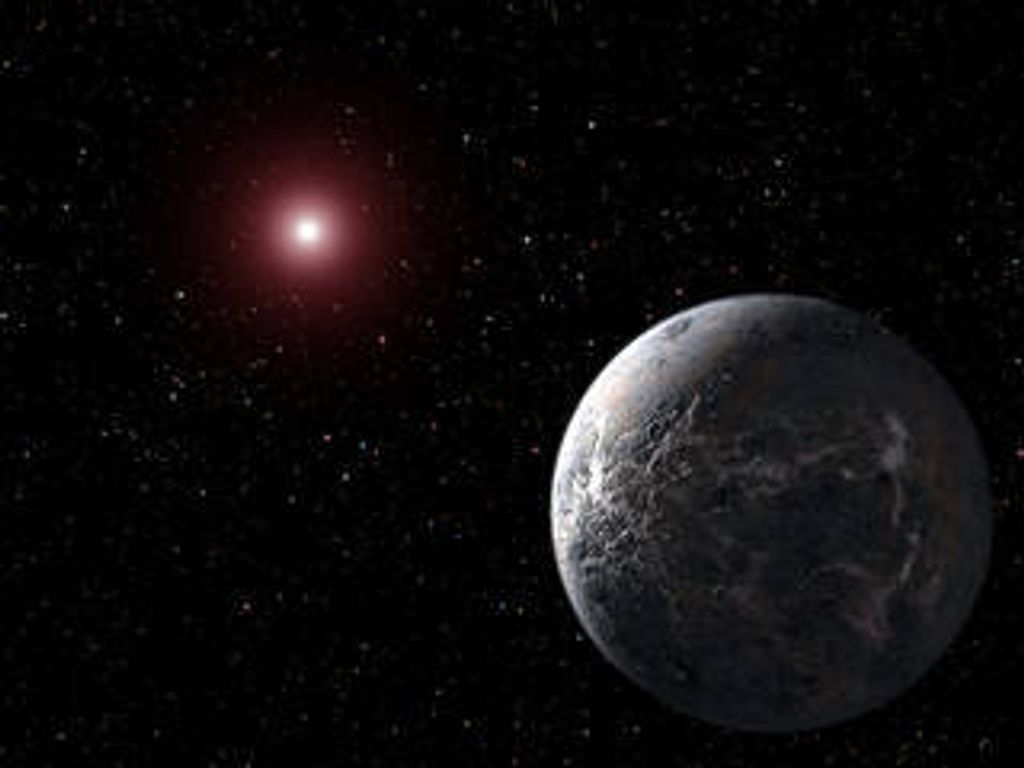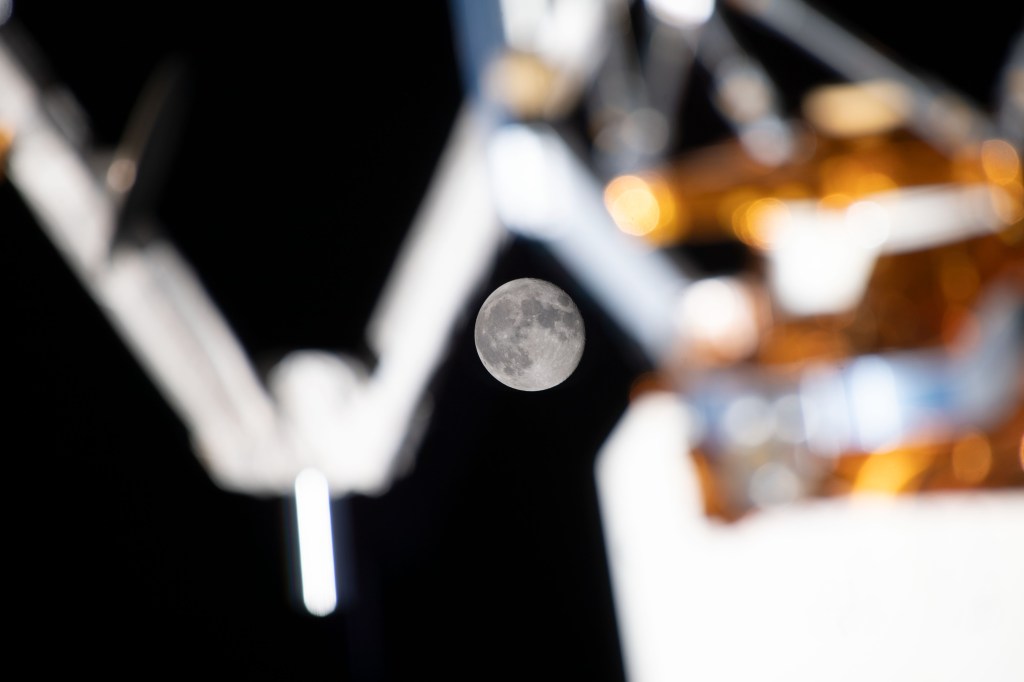1 min read
Hubble Pushed Beyond Limits to Spot Clumps of New Stars in Distant Galaxy

In this Hubble photograph of a distant galaxy cluster, a spotty blue arc stands out dramatically against a background of red galaxies. That arc is actually three separate images of the same background galaxy. The background galaxy has been gravitationally lensed, its light magnified and distorted by the intervening galaxy cluster.
By using the magnifying power of this natural cosmic lens, astronomers have been able to study the background galaxy in intimate detail. Through sophisticated computer processing, they determined how the galaxy’s image has been warped by gravity. The image at right shows how the galaxy would look to Hubble without distortions.
It reveals a disk galaxy containing clumps of star formation that each span about 200 to 300 light-years. This contradicts theories suggesting that star-forming regions in the distant, early universe were much larger, 3,000 light-years or more in size.
About the Object
- R.A. PositionR.A. PositionRight ascension – analogous to longitude – is one component of an object's position.11h10m24.4s
- Dec. PositionDec. PositionDeclination – analogous to latitude – is one component of an object's position.+64º59'16"
- ConstellationConstellationOne of 88 recognized regions of the celestial sphere in which the object appears.Ursa Major
- DistanceDistanceThe physical distance from Earth to the astronomical object. Distances within our solar system are usually measured in Astronomical Units (AU). Distances between stars are usually measured in light-years. Interstellar distances can also be measured in parsecs.Galaxy cluster SDSS J1110+6459: 6.14 billion light years, lensed galaxy SGAS J111020.0+645950.8 11.05 billion light years
About the Data
- Data DescriptionData DescriptionProposal: A description of the observations, their scientific justification, and the links to the data available in the science archive.
Science Team: The astronomers who planned the observations and analyzed the data. "PI" refers to the Principal Investigator.The Hubble image was created from HST data from proposal 13003 M. Gladders (U. Chicago) - InstrumentInstrumentThe science instrument used to produce the data.HST WFC3/UVIS, WFC3/IR
- Exposure DatesExposure DatesThe date(s) that the telescope made its observations and the total exposure time.Jan. 8, 2013
- FiltersFiltersThe camera filters that were used in the science observations.WFC3/UVIS F390W, F606W, WFC3/IR F105W, F160W
- Object NameObject NameA name or catalog number that astronomers use to identify an astronomical object.Galaxy cluster SDSS J1110+6459, lensed galaxy SGAS J111020.0+645950.8
- Object DescriptionObject DescriptionThe type of astronomical object.Galaxy cluster and gravitationally lensed galaxies
- Release DateJuly 6, 2017
- Science ReleaseHubble Pushed Beyond Limits to Spot Clumps of New Stars in Distant Galaxy
- Credit

This image is a composite of separate exposures made by the WFC3 instrument on the Hubble Space Telescope using two different cameras and filters isolating the light of specific elements or of specific broad wavelength ranges. The color arises by assigning different hues (colors), to each monochromatic image. In this case, the colors are: blue WFC3/UVIS F390W, green WFC3/UVIS F606W, orange/red: WFC3/IR F105W, red WFC3/IR F160W.
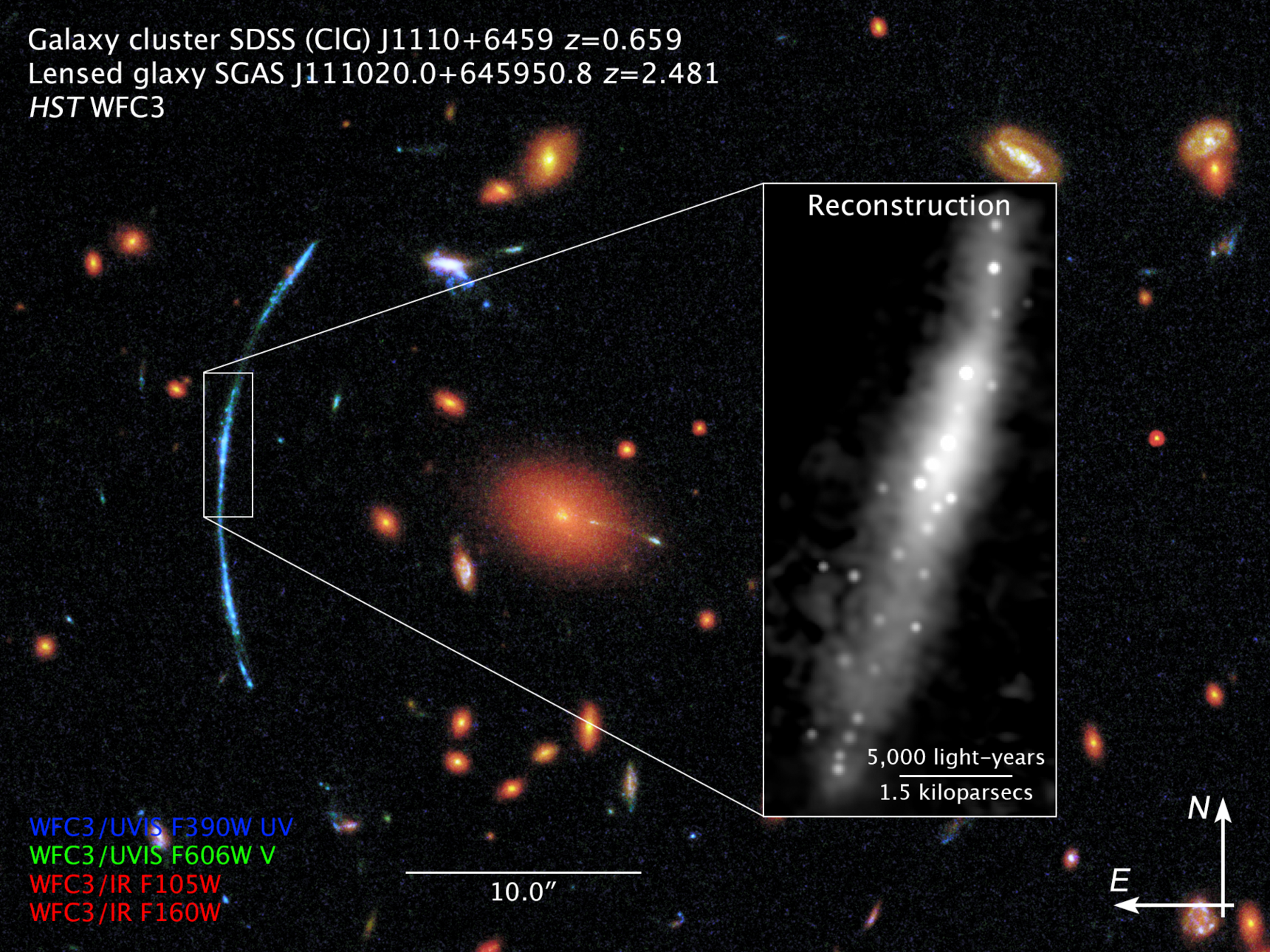
Related Images & Videos

Wide Field Image of Galaxy Cluster SDSS J1110+6459
The galaxy cluster shown here, SDSS J1110+6459, was discovered as part of the Sloan Giant Arcs Survey. It is located about 6 billion light-years from Earth (redshift of z=0.659) and contains hundreds of galaxies. At left, a distinctive blue arc is actually composed of three...

Artist's Illustration of Unlensed Source Galaxy
This artist’s illustration portrays what the gravitationally lensed galaxy SDSS J1110+6459 might look like up close. A sea of young, blue stars is streaked with dark dust lanes and studded with bright pink patches that mark sites of star formation. The patches’ signature glow...
Share
Details
Claire Andreoli
NASA’s Goddard Space Flight Center
Greenbelt, Maryland
claire.andreoli@nasa.gov

